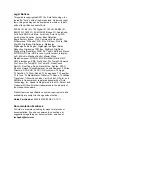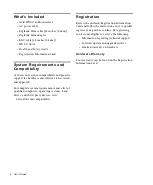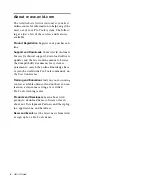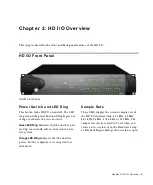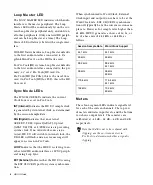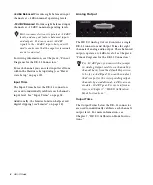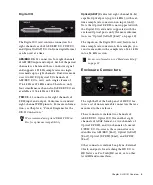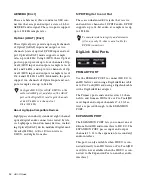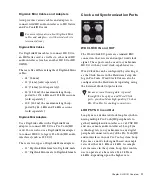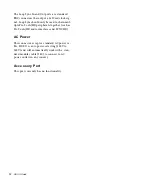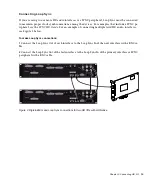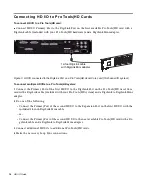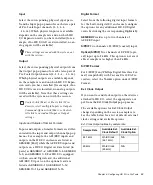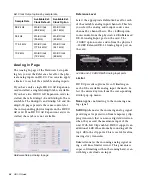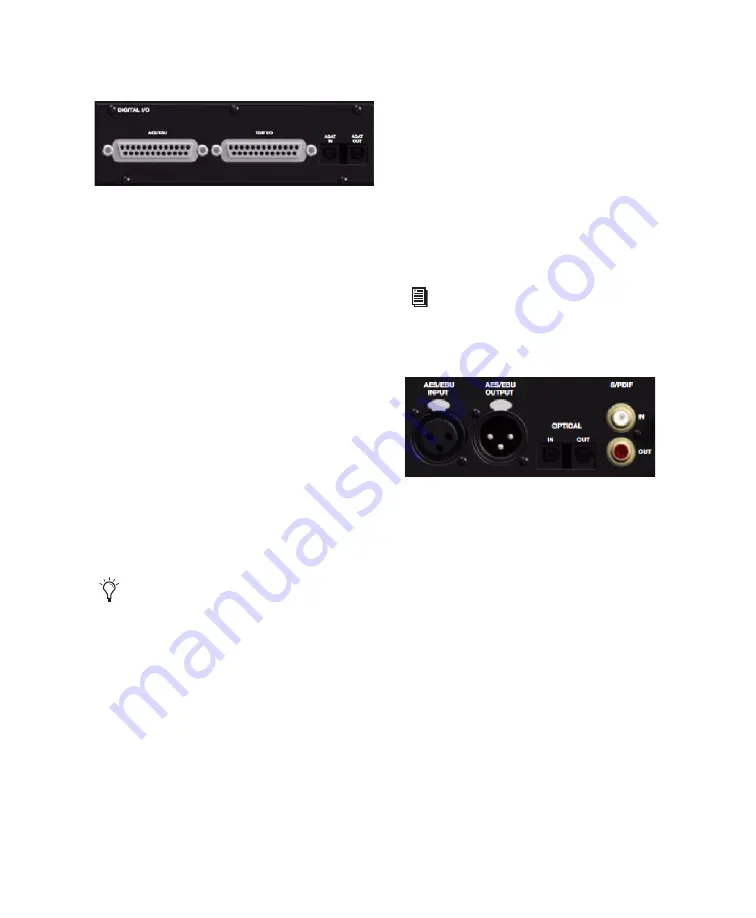
Chapter 2: HD I/O Overview
9
Digital I/O
The Digital I/O card contains connectors for
eight channels each of AES/EBU I/O, TDIF I/O,
and Optical (ADAT) I/O. Only one digital format
can be used at a time.
AES/EBU
DB–25 connectors for eight channels
of AES/EBU input and output. Each of the paired
channels is a balanced three-conductor signal,
and supports 192 kHz sample rates in single-
wire mode up to eight channels. Dual-wire mode
uses two HD I/O physical I/O channels of
AES/EBU I/O to carry each single stream of
176.4 kHz or 192 kHz audio. Therefore, only
four simultaneous channels of AES/EBU I/O are
available at 176.4 kHz or 192 kHz.
TDIF
DB–25 connectors for eight channels of
TDIF input and output. Conforms to standard
eight-channel TDIF pinouts. For more informa-
tion, see Chapter 6, “Pinout Diagrams for the
DB-25 Connectors.”
Optical (ADAT)
Dedicated, eight-channel 24-bit
capable Optical ports (up to 48 kHz), with real-
time sample rate conversion on input (only).
Note that Optical S/PDIF is not supported with
the Digital I/O card and is supported with the
enclosed Optical ports only (for more informa-
tion, see “Optical (ADAT) [Encl]” on page 10).
The inputs on the Digital I/O card feature real-
time sample rate conversion. For example, you
can stream audio with a sample rate of 44.1 kHz
into a 96 kHz session.
Enclosure Connectors
The right half of the back panel of HD I/O fea-
tures a set of non-removable connectors that are
mounted to the enclosure.
These connectors include two channels of
AES/EBU IO, Optical I/O (for another eight
channels of ADAT format, or two channels of
Optical S/PDIF), and two channels of coaxial
S/PDIF I/O. On-screen, these connectors are
identified as AES/EBU [Encl], Optical (ADAT)
[Encl], Optical (S/PDIF) [Encl], and S/PDIF
[Encl].
Other connectors include Loop Sync, External
Clock, and ports for attaching the HD I/O to
HD Native or Pro Tools|HD cards, or to other
Avid HD audio interfaces.
We recommend using Avid DB-25 TDIF ca-
bles for optimum compatibility.
For more information, see“Hardware Setup”
on page 19.
Summary of Contents for HD I/O
Page 1: ...HD I O Guide...
Page 22: ...HD I O Guide 18...
Page 38: ...HD I O Guide 34...
Page 42: ...HD I O Guide 38...
Page 50: ...HD I O Guide 46...
Page 51: ......


